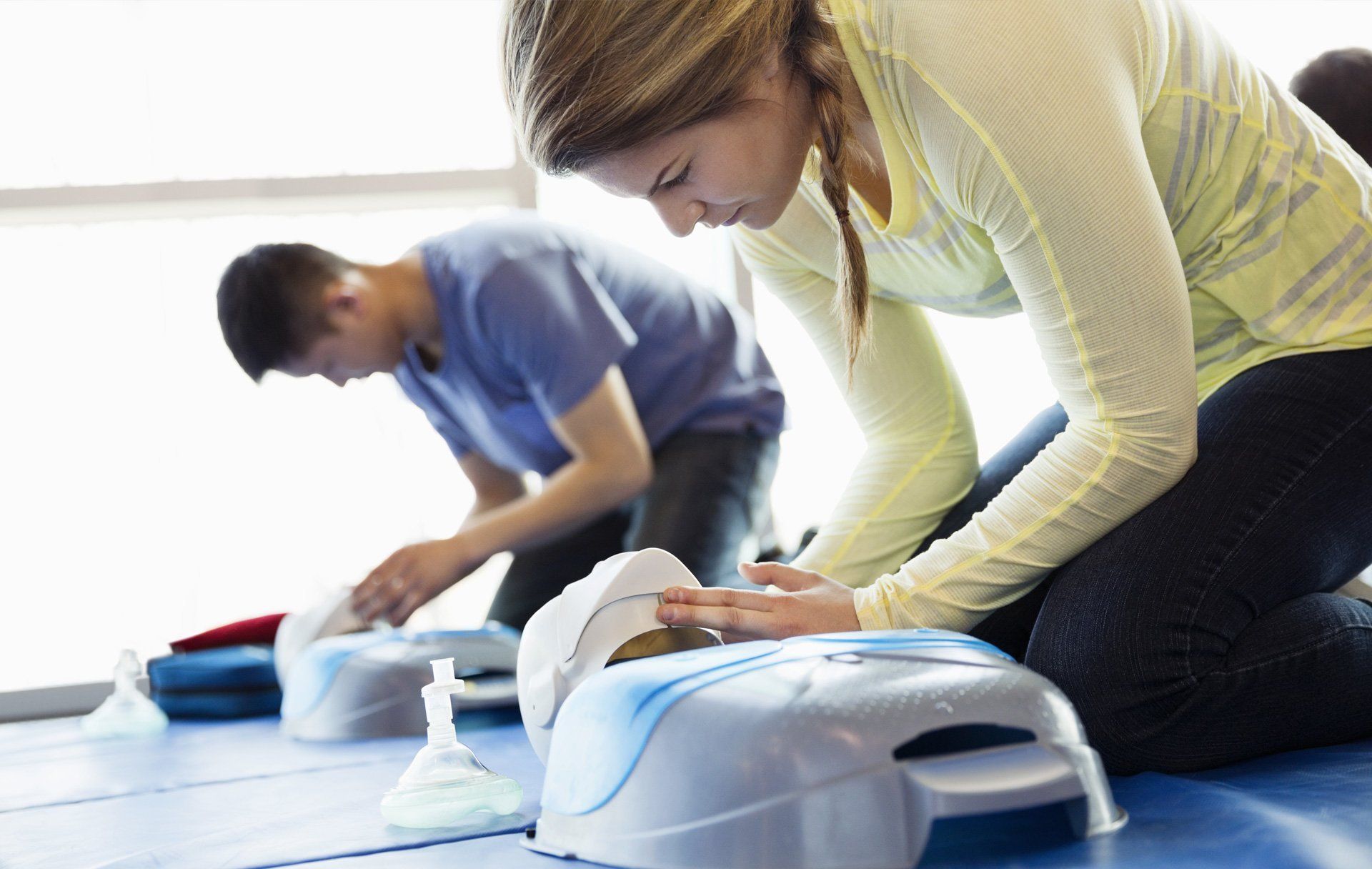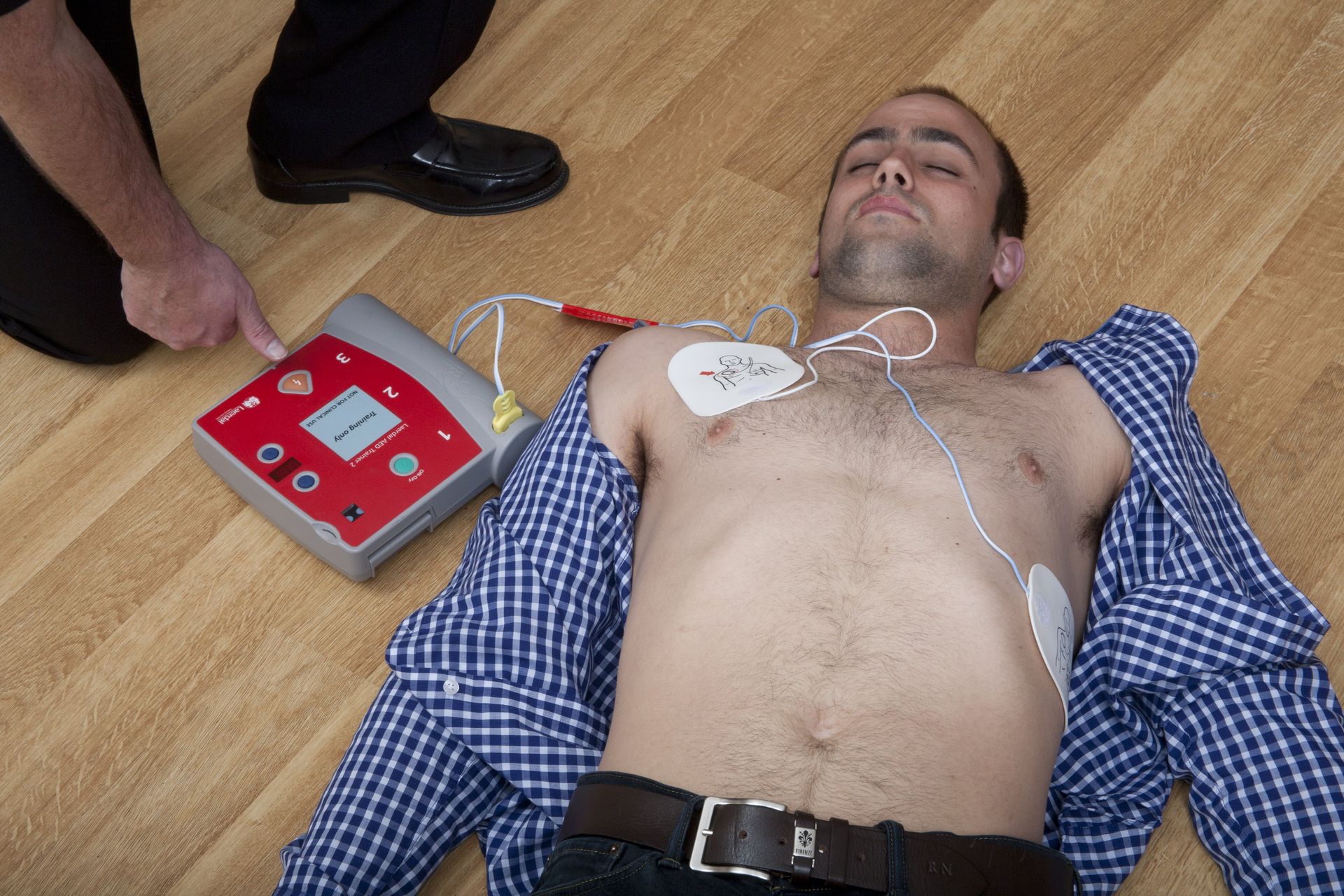
Children, older people, and people with long term health conditions (such as diabetes and heart problems) are more at risk of heat
exhaustion or heat stroke. If you have children, older relatives or know people that have health conditions make sure they are drinking
enough water and staying cool. You can also check on neighbours to make sure they are coping in the heat.
Signs of heat exhaustion
-Tiredness
-Dizziness
-Headache
-Feeling sick or being sick
- Fast breathing or heartbeat
- Excessive sweating
- Skin becoming pale and clammy or getting a heat rash, but a change in skin colour can be harder to see on brown or black skin colour.
- High temperature
- Being very thirsty
- Weakness
If someone is showing signs of heat exhaustion, they need to be cooled down and given fluids such as cool water and sit them in a cool place and keep watch of them to make sure that their condition does not worsen.
Things you can do to cool them down
- Move them to a cool place such as a shaded area.
- Remove unnecessary clothing such as socks or jacket to bring there temperature down.
- Get them to drink a sport, rehydration drink or cool water.
- Cool their skin with spray or sponge them with cool water or fan them.
-Stay with them until they’re better they should start to feel better within 30 minutes.
Contact 111 - if you or someone else have symptoms of heat exhaustion that you are struggling to treat or need advice about.
Call 999 if you have the following:
-Still unwell after 30 minutes of resting in a cool place, drinking fluids.
- A very high temperature
- Hot skin that is not sweating and might look red (this can be harder to see on brown or black skin)
- A fast heartbeat
- A seizure or fit
- Loss of consciousness
- Confusion and lack of coordination
Preventing heat exhaustion:
There is a high risk of heat exhaustion or heat stroke during hot weather or exercise. To help prevent heat exhaustion or heatstroke you should:
- Drink more cold drinks especially if you are active or exercising.
- Wear light colour clothing, loos clothing
- Avoid the sun between 11am-3pm
- Avoid excessive alcohol.
- If you are inside on a very hot day, close curtains, and windows if it is hotter outside them inside your home.


Dave is 47 years old and six weeks ago he began a bout of sickness which lasted for three days and nights. During these three days the headaches were so severe that he lost consciousness at least three times.
On 4th day he noticed a rash on his chest and arms. The headaches and sickness remained. Dave dialed 111 and was told by a Doctor that he was suffering from gastroenteritis. The Doctor told him the rash was a result of the vomiting.
On day 6 he visited his GP who again said that he was suffering from gastroenteritis and prescribed pain killers. The next day he experienced an improvement but by the eighth day the headaches became more severe and a new symptom developed in the shape of aching limbs and feet. By day 9 he was exhausted and slept all day.
On the 10th day he went to A.E. Department of his local hospital where he was once again told that he has gastroenteritis and was placed on an intravenous drip. After one hour he was sent home.
The next day he experienced the worst headaches yet. He dialed 999 and was refused an ambulance but instead was advised to dial 111. His wife drove him to A.E. and this time he was given morphine to numb the excruciating pain he was experiencing and was given a scan. He was placed on an isolation ward and was tested for Lyme’s Disease, TB, HIV and Weil’s Disease.
These tests proved to be negative and he was eventually diagnosed with bacterial meningitis . He was given a Lumbar Puncture and further blood tests.
Dave remained in hospital for 10 days during which time he continued to vomit and hallucinate. He also developed hearing difficulties.
The medical staff concluded that he had contracted bacterial meningitis when he visited Egypt 8 years earlier and it had laid dormant for all that time.
This whole process took at least 20 days.
A 20-day period during which Dave almost died. If it had not been for his persistence he would have died.
The point of all of this is that YOU ARE THE BEST JUDGE OF HOW YOU FEEL, and things are very often misdiagnosed. Thanks to Dave for sharing his experience with us and helping us to identify some of the signs and symptoms of bacterial meningitis.
Common signs and symptoms of meningitis are:
- High temperature
- Cold hands and feet
- Vomiting
- Confusion
- Breathing quickly
- Muscle and joint pain
- Mottled or blotchy skin
- Spots or a rash
- Headache
- Stiff neck
- Dislike of bright lights
- Being very sleepy or difficult to wake
- Seizures

This decision is a significant step in the right direction to empower the future generation to help people when a casualty needs first aid treatment. The Government proposes to teach first aid skills and CPR training as part of compulsory health education in all schools in England from 2020.
Statistics show less than one in ten people survive an out of hospital cardiac arrest in the UK, but evidence suggests one in four people could survive if young people were trained with basic life saving skills such as CPR. Statistics from countries such as Norway and Holland show survival rates as high as 73% with bystander CPR due to the confidence of the person performing the technique.
It has taken years of campaigning with British Heart Foundation, St John’s Ambulance and British Red Cross who work together to form the ‘Every Child a Lifesaver’ campaign. In previous years the inclusion of first aid in the school curriculum was rejected and any child being taught first aid it was an extra curriculum activity.
Furthermore, Lord Kerslake’s inquiry into the bombing of a Ariana Grande concert last May found members of the public tried to help the injured and dying but lacked the requisite skills. The report recommended more government support for first aid training. 22 people were killed at that concert and the inquiry praised the public’s response but also raised concerns that people were trying their very best in genuinely harrowing circumstances but did not appear familiar with first aid principles.
We will follow the progress of this decision with keen interest.

For my first blog I thought it would be good to talk about defibrillators as they are key to saving lives particular within our communities.
It certainly was welcome news from the HSE who now recommend all work place first aid courses include defibrillator awareness training. It is something we have always provided on our courses to improve confidence with their use, particularly with the public access defibrillators which we now see on village halls, in old telephone boxes and High Street walls etc.
A sudden cardiac arrest can happen to anyone at any time, regardless of age, gender and fitness. Ideally a defibrillator should be used within three minutes on an unresponsive non-breathing casualty. Every minute that passes without a defibrillator being used the chances of survival reduce by 10%.
So, we hope we never need to use one but if we do it’s important to remain calm, phone 999 / 112 for an ambulance and follow the main basic instructions:
1. Open the box and turn it on (some will automatically switch on)
2. Follow the automated instructions
3. Apply pads to bare chest (look carefully at the picture on the pads it will show you where to place them)
4. If shock advised stand clear and press the orange button when instructed to do so.
5. If no shock advised it will either say commence CPR or check for signs of life.
6. Continue to work with the defibrillator and don’t ever take the pads off the machine monitors the heart rhythm all the time.
If you’ve not sure about CPR the operator in the ambulance control room (clinical hub) will tell you exactly what to do which is why it is recommended to put your phone on loud speaker so you can perform CPR, listen and talk to the operator at the same time.
Of importance when carrying our CPR is the need to perform 30 chest compressions placing hands in the centre of the chest, push down no more than 6cm and at a speed of 100 / 120 compressions per minute. Ideally, we would need to put two breaths into the casualty but if you feel that you are able to do this then perform chest compressions only. Either way we don’t want to be off the chest more than 10 seconds as the chest compressions keep the heart shockable for the defibrillator.
As with most things there are safety implications which the operator will assist with and is also why attending a first aid course is beneficial.

Children, older people, and people with long term health conditions (such as diabetes and heart problems) are more at risk of heat
exhaustion or heat stroke. If you have children, older relatives or know people that have health conditions make sure they are drinking
enough water and staying cool. You can also check on neighbours to make sure they are coping in the heat.
Signs of heat exhaustion
-Tiredness
-Dizziness
-Headache
-Feeling sick or being sick
- Fast breathing or heartbeat
- Excessive sweating
- Skin becoming pale and clammy or getting a heat rash, but a change in skin colour can be harder to see on brown or black skin colour.
- High temperature
- Being very thirsty
- Weakness
If someone is showing signs of heat exhaustion, they need to be cooled down and given fluids such as cool water and sit them in a cool place and keep watch of them to make sure that their condition does not worsen.
Things you can do to cool them down
- Move them to a cool place such as a shaded area.
- Remove unnecessary clothing such as socks or jacket to bring there temperature down.
- Get them to drink a sport, rehydration drink or cool water.
- Cool their skin with spray or sponge them with cool water or fan them.
-Stay with them until they’re better they should start to feel better within 30 minutes.
Contact 111 - if you or someone else have symptoms of heat exhaustion that you are struggling to treat or need advice about.
Call 999 if you have the following:
-Still unwell after 30 minutes of resting in a cool place, drinking fluids.
- A very high temperature
- Hot skin that is not sweating and might look red (this can be harder to see on brown or black skin)
- A fast heartbeat
- A seizure or fit
- Loss of consciousness
- Confusion and lack of coordination
Preventing heat exhaustion:
There is a high risk of heat exhaustion or heat stroke during hot weather or exercise. To help prevent heat exhaustion or heatstroke you should:
- Drink more cold drinks especially if you are active or exercising.
- Wear light colour clothing, loos clothing
- Avoid the sun between 11am-3pm
- Avoid excessive alcohol.
- If you are inside on a very hot day, close curtains, and windows if it is hotter outside them inside your home.


Dave is 47 years old and six weeks ago he began a bout of sickness which lasted for three days and nights. During these three days the headaches were so severe that he lost consciousness at least three times.
On 4th day he noticed a rash on his chest and arms. The headaches and sickness remained. Dave dialed 111 and was told by a Doctor that he was suffering from gastroenteritis. The Doctor told him the rash was a result of the vomiting.
On day 6 he visited his GP who again said that he was suffering from gastroenteritis and prescribed pain killers. The next day he experienced an improvement but by the eighth day the headaches became more severe and a new symptom developed in the shape of aching limbs and feet. By day 9 he was exhausted and slept all day.
On the 10th day he went to A.E. Department of his local hospital where he was once again told that he has gastroenteritis and was placed on an intravenous drip. After one hour he was sent home.
The next day he experienced the worst headaches yet. He dialed 999 and was refused an ambulance but instead was advised to dial 111. His wife drove him to A.E. and this time he was given morphine to numb the excruciating pain he was experiencing and was given a scan. He was placed on an isolation ward and was tested for Lyme’s Disease, TB, HIV and Weil’s Disease.
These tests proved to be negative and he was eventually diagnosed with bacterial meningitis . He was given a Lumbar Puncture and further blood tests.
Dave remained in hospital for 10 days during which time he continued to vomit and hallucinate. He also developed hearing difficulties.
The medical staff concluded that he had contracted bacterial meningitis when he visited Egypt 8 years earlier and it had laid dormant for all that time.
This whole process took at least 20 days.
A 20-day period during which Dave almost died. If it had not been for his persistence he would have died.
The point of all of this is that YOU ARE THE BEST JUDGE OF HOW YOU FEEL, and things are very often misdiagnosed. Thanks to Dave for sharing his experience with us and helping us to identify some of the signs and symptoms of bacterial meningitis.
Common signs and symptoms of meningitis are:
- High temperature
- Cold hands and feet
- Vomiting
- Confusion
- Breathing quickly
- Muscle and joint pain
- Mottled or blotchy skin
- Spots or a rash
- Headache
- Stiff neck
- Dislike of bright lights
- Being very sleepy or difficult to wake
- Seizures

Finalist in Safety Training Provider
of the Year 2023








